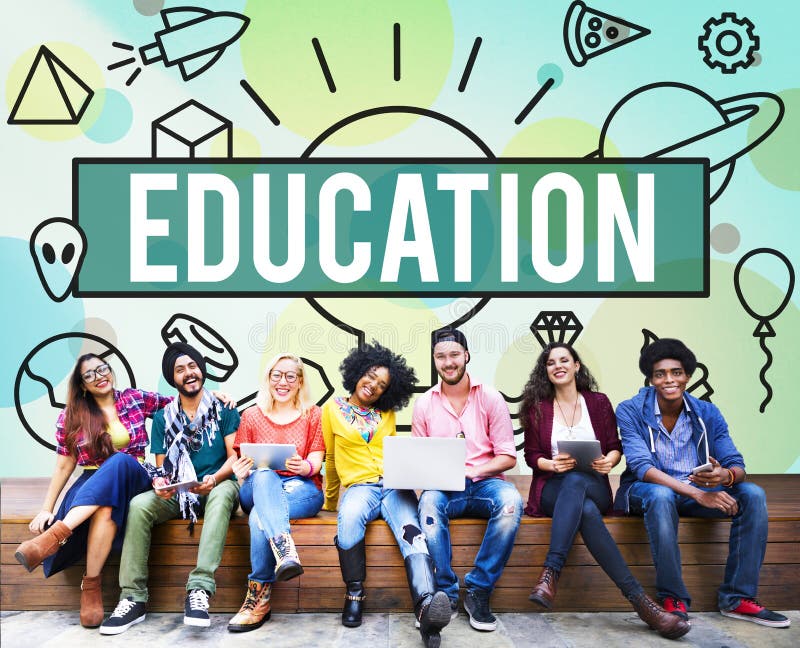The Role of Education And Learning in Structure a Comprehensive Educational Website for All
The role of education and learning in developing a comprehensive academic site for all is progressively recognized as essential in today's diverse culture. This inquiry welcomes further expedition into the characteristics of academic equity and efficiency.
Significance of Inclusivity

When instructional websites prioritize inclusivity, they create a society of belonging where every trainee really feels valued and encouraged. This environment encourages energetic participation, collaboration, and common regard among students, promoting stronger interpersonal connections. In addition, comprehensive methods contribute to enhanced scholastic outcomes, as pupils are more probable to engage with the educational program when they see their identities reflected and appreciated.
In addition, inclusivity prepares trainees for a varied workforce and culture, furnishing them with the skills necessary to browse and contribute favorably to varied atmospheres. By embracing inclusivity, academic websites not only accomplish their ethical commitments yet also enhance the instructional landscape, inevitably benefiting pupils, instructors, and the area at large. For that reason, fostering inclusivity is crucial for the development of reliable and fair education.
Leveraging Modern Technology for Knowing
Including modern technology right into educational websites improves inclusivity by providing diverse knowing devices and sources tailored to individual demands. Digital platforms enable the integration of multimedia sources, such as videos, interactive simulations, and gamified discovering experiences, which satisfy differing learning styles. This ease of access makes sure that students can involve with material in methods that resonate with them, promoting a much deeper understanding of subject.
In addition, technology helps with real-time comments and customized discovering paths. Through flexible discovering innovations, instructional websites can examine specific efficiency information, allowing customized material shipment that meets each learner's speed and proficiency level. This approach not only boosts engagement yet additionally encourages pupils to take possession of their understanding trip.

Innovative Teaching Methods

One noticeable method is project-based discovering (PBL), which motivates pupils to participate in hands-on projects that address intricate questions or difficulties. This strategy fosters cooperation, creativity, and problem-solving skills, all of which are necessary in today's labor force. Flipped class have obtained traction, where typical discovering is turned around; trainees learn this here now assess lecture materials at home and involve in interactive activities throughout class time, advertising much deeper understanding and retention.
An additional substantial trend is the assimilation of gamification into education. By including game components into lessons, instructors encourage learners and improve participation with competitors and rewards. Furthermore, set apart direction dressmakers finding out experiences to meet the diverse demands of students, enabling individualized knowing courses that adapt to varying capacities and interests.
Cooperation and Community Building
Often, cooperation and neighborhood building are acknowledged as essential parts of effective education, promoting a encouraging and comprehensive knowing atmosphere. These aspects develop a structure where pupils, instructors, and community members can participate in meaningful interactions, enhancing the academic experience for all participants.
Partnership motivates the sharing of ideas, resources, and know-how, promoting a richer learning procedure. This vibrant assists to damage down silos within the academic ecological community, advertising interdisciplinary techniques that can resolve intricate problems. By collaborating, educators can develop innovative educational programs that mirror diverse point of views while fulfilling the diverse requirements of trainees.
Community building works together with cooperation, as it grows a sense of belonging among all stakeholders. They are more most likely to invest time and resources right into cumulative goals when people feel connected to their educational community. This common commitment can lead to raised inspiration, improved scholastic results, and greater retention prices.
Additionally, fostering cooperation and community structure can additionally prolong beyond the class, including moms and dads, local companies, and services. These partnerships can provide support and sources that boost educational possibilities, eventually contributing to a more comprehensive instructional site for all.
Measuring Success and Effect
The effectiveness of partnership and community building in instructional setups can be analyzed through numerous metrics that gauge success and impact. These metrics might include trainee engagement levels, scholastic performance, retention rates, and area feedback. By using measurable information such as examination scores and graduation prices, educational stakeholders can assess the total effectiveness of collective campaigns.
Furthermore, qualitative assessments, such as surveys and focus teams, provide useful insights into participant satisfaction and viewed advantages of community-building activities. Consistently tracking these metrics enables teachers moved here to identify areas of strength and those requiring improvement, making sure that joint efforts stay impactful and concentrated.
Additionally, longitudinal research studies can aid measure the long-lasting impacts of instructional partnerships on trainee outcomes and neighborhood growth. These assessments can disclose trends in time, showing just how continual collaboration fosters an atmosphere for finding out and advancement.
Inevitably, defining success in educational settings calls for a multifaceted technique, incorporating both qualitative and measurable information. By continuously assessing the effect of partnership and community-building click here for info initiatives, educational websites can improve their approaches, ensuring they meet the diverse needs of all stakeholders involved.
Conclusion
In conclusion, education and learning offers as a foundation in developing a thorough academic site that focuses on inclusivity for all students. Ultimately, the dedication to inclusivity and equity prepares trainees for success in an interconnected and diverse globe, reinforcing the transformative power of education and learning.
The value of inclusivity in academic websites can not be overemphasized, as it plays an important role in promoting a learning setting that accommodates diverse histories and capabilities. Inclusivity makes sure that all students, no matter of their socio-economic status, ethnic culture, gender, or finding out abilities, have fair access to instructional resources and possibilities.When educational websites prioritize inclusivity, they create a culture of belonging where every trainee feels valued and equipped. By welcoming inclusivity, academic websites not just satisfy their moral obligations yet also enhance the educational landscape, eventually profiting students, instructors, and the community at big.The performance of partnership and area building in academic setups can be evaluated with numerous metrics that measure success and effect.